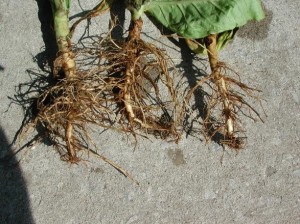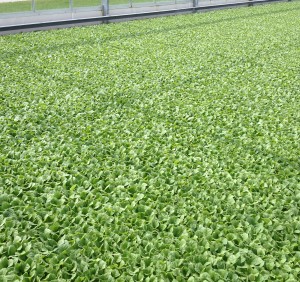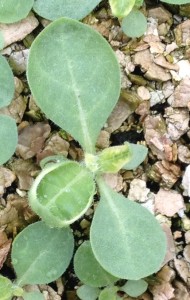Harvest is now underway on some farms. To date, there continues to be no widespread problems. There has been excessive rains in some areas, which have caused some crops to turn yellow. Additional nitrogen has been applied in these cases to try to bring back the colour.
Some growers are reporting a reddish or pink discolouration (frost-like appearance) on some leaves in certain areas of fields. This often seems to be in weaker areas of fields or where the tobacco is low in nitrogen. We started to receive calls about this problem this week, soon after a storm had gone through the area. It is suspected that the damage is from driving rain and windy conditions. The discolouration on the leaf is likely the result of the leaf tissue breaking down. Often the side of the plant that the storm originated from shows the most discolouration on the leaves. With time, the affected areas of the leaf turn brown and will often fall out.
We encountered a case of Tobacco Mosaic Virus (TMV) in a field last week. In this particular case the field was being double cropped. TMV spreads by contact and can be easily spread to several plants down a row. Whenever TMV is seen in a field, even if it is only a few infected plants, it is recommended not to double crop the field with tobacco because often in the second year several plants in the field can become infected with the virus. For more information on TMV and its control, please refer to the technical bulletin entitled “Tobacco Pests and Disorders in the Field – Tobacco Mosaic Virus (TMV)” posted in the plant protection section under the research heading of this website.
To date, there have been no reports of Blue Mold in Ontario. As for other diseases, there continues to be reports of Target Spot in the lower leaves. Up until now at least, Potato Virus Y (PVY) does not appear to be as prominent and widespread as last year.
Post prepared and sent by Canadian Tobacco Research Foundation
Mailing Address: CTRF, P.O. Box 322, Tillsonburg, ON N4G 4H5
Telephone: 519-842-8997
Web Address: http://ctrf1.com















